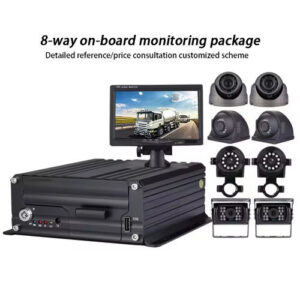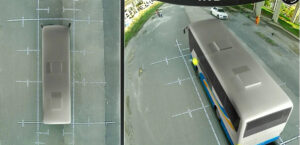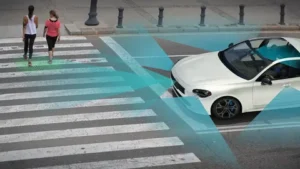ESD Protection in Car Cameras: Critical Challenges and Solutions for New Energy Vehicles
As the wave of new energy vehicles (NEVs) grows, advanced intelligent driving systems increasingly rely on sensors like cameras, radar, and infrared devices. Modern NEVs now integrate up to 12 cameras and 8+ radar/infrared sensors, raising concerns about electronic safety—particularly electrostatic discharge (ESD) risks in car cameras. This guide explores ESD challenges and proven mitigation strategies.
Car Camera Structure & ESD Vulnerability
Car cameras have a simple three-part design:
Front Cover (Lens): Optical component for image capture.
Back Cover (Interface): Connects to vehicle systems (e.g., CAN/LIN protocols).
Hardware (Circuit Board): Processes signals; the most ESD-sensitive area.
Why ESD Matters:
Static electricity can damage circuits, causing malfunctions in ADAS (Advanced Driver Assistance Systems).
Poor ESD protection risks data corruption, reduced camera lifespan, and safety hazards.
3 Common ESD Design Mistakes (and Solutions)
Mistake 1: Poor Grounding via Screw Holes
Issue: Using non-conductive electroplated screws to ground PCB through copper pads.
Result: High impedance weakens grounding, worsening ESD susceptibility.
Solution:
Replace electroplated screws with conductive stainless steel screws.
Add spring washers to ensure low-impedance metal-to-metal contact.
Mistake 2: Ineffective PCB-to-Housing Contact
Issue: Relying on PCB-edge copper, metal springs, or shields for grounding.
Flaws: Intermittent contact, single-point grounding, or poor shield alignment.
Solution:
Use multi-point grounding with conductive gaskets or EMI shielding tape.
Integrate flexible metal braids between PCB and housing for stable conductivity.
Mistake 3: Overusing Insulation Coatings
Issue: Applying potting materials to insulate PCB components from the housing.
Drawbacks: Blocks heat dissipation and fails against spatial ESD coupling.
Solution:
Replace full potting with targeted conformal coatings on sensitive ICs.
Combine with thermal pads to maintain heat dissipation.
Best Practices for ESD-Resistant Car Cameras
Material Selection:
Use metal housings (aluminum alloy) for better EMI/ESD shielding vs. plastic.
Grounding Optimization:
Ensure multi-point, low-impedance grounding (<0.1Ω) between PCB and housing.
Sealing & Shielding:
Apply EMI gaskets around lens edges and interfaces to block external interference.
Testing Protocols:
Validate designs with IEC 61000-4-2 (ESD immunity) and CISPR 25 (EMI standards).
Industry Case Study: Shenzhen FireCore Technology Co., Ltd
A leader in automotive camera solutions, FireCore addresses ESD challenges through:
Multi-Layer Shielding: Combines metal housings with embedded Faraday cages.
Active ESD Suppression: Integrates TVS diodes and transient voltage clamps on PCBs.
Thermal-ESD Balance: Uses graphene-enhanced thermal pads to dissipate heat while maintaining grounding efficiency.






